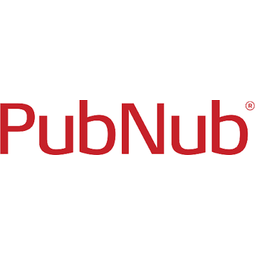Download PDF
Scratchpad Enhances Sales Team Efficiency Through Real-Time Collaboration
Technology Category
- Analytics & Modeling - Real Time Analytics
Applicable Industries
- Cement
- Electrical Grids
Applicable Functions
- Sales & Marketing
Use Cases
- Real-Time Location System (RTLS)
- Track & Trace of Assets
The Challenge
Scratchpad, a workspace designed for salespeople to quickly access and update Salesforce, was facing challenges in providing real-time updates and collaboration features at scale. The sales teams needed to focus on customer relationships rather than constantly switching between tabs to update fields and next steps in Salesforce. The existing in-house system was not able to provide the speed and reliability required to improve efficiency and increase sales. The challenge was to find a solution that could streamline the day-to-day work of sales teams, remove the tedium of data entry, and enable real-time collaboration and updates.
About The Customer
Scratchpad is a workspace designed specifically for salespeople to quickly access and update Salesforce. Their mission is to make salespeople happy by providing them with a revenue team workspace that streamlines their day-to-day work. Scratchpad combines notes, tasks, pipeline management, chat, and collaboration into one simple revenue team workspace, always connected to Salesforce. This eliminates the need for sales reps to switch back and forth between apps, copy and paste data in Salesforce, and use multiple browser tabs to keep track of to-dos, allowing them to focus on closing more deals.
The Solution
Scratchpad turned to PubNub to leverage its real-time updates and collaboration features. PubNub's functionalities allowed Scratchpad to synchronize client-side applications and deliver digital collaboration capabilities to sales teams. When one person made a comment in the Scratchpad app, it immediately got pushed to all the people who had that particular page open, enabling real-time communication. PubNub's Javascript documentation helped Scratchpad's team to easily build these features into their app. Furthermore, Scratchpad utilized PubNub's Presence functionality to deliver dynamic information to users in a channel. The switch to PubNub provided Scratchpad with the reliability and speed they needed to streamline the many different aspects of sales.
Operational Impact
Related Case Studies.

Case Study
System 800xA at Indian Cement Plants
Chettinad Cement recognized that further efficiencies could be achieved in its cement manufacturing process. It looked to investing in comprehensive operational and control technologies to manage and derive productivity and energy efficiency gains from the assets on Line 2, their second plant in India.

Case Study
Hydro One Leads the Way In Smart Meter Development
In 2010, Ontario’s energy board mandated that time-of-use (TOU) pricing for consumers be available for all consumers on a regulated price plan. To meet this requirement, Hydro One needed to quickly deploy a smart meter and intelligent communications network solution to meet the provincial government’s requirement at a low cost. The network needed to cover Hydro One’s expansive service territory, which has a land mass twice the size of Texas, and its customers live in a mix of urban, rural, and remote areas, some places only accessible by air, rail, boat or snowmobile. Most importantly, the network needed to enable future enterprise-wide business efficiencies, modernization of distribution infrastructure and enhanced customer service. To meet these needs, Hydro One conceptualized an end-to-end solution leveraging open standards and Internet Protocols (IP) at all communication levels. The utility drew upon industry leaders like Trilliant to realize this vision.

Case Study
Selling more with Whirlpool
Whirlpool wanted to add connectivity to appliances and transform the company's relationship with customers. Traditionally, Whirlpool interaction with customers was limited to purchases made once every ten years. Connected washer and dryers provide exciting new features like remote management of start times and inter-machine communication.

Case Study
SAS® Analytics for IoT: Smart Grid
Companies face falling revenues, rising infrastructure costs, and increasing risk of outages caused by inconsistent energy production from renewable sources. Less money is coming in as more people and organizations take steps to curb their energy use. Utilities are paying more to maintain and build infrastructure due to increasing complexity, resulting from the rising number of intermittent and variable renewable energy sources connected in the distribution grid.

Case Study
Enel Secures Italian Power Generation Network
Electric energy operators around the world are working to increase the reliability and cyber resiliency of their systems. This includes Enel, a global power company that manages and monitors the Italian power grid. This grid:• Serves 31 million customers• Has a net installed energy capacity exceeding 31 gigawatts• Includes more than 500 power generation plants,including hydroelectric, thermoelectric, and wind• Is managed and monitored by Enel 24/7/365• Is operated by Terna, the Italian Transmission System Operator (TSO)Enel is responsible for the availability of the grid’s underlying ICS and industrial network. It also manages Regional Control Centers and Interconnection Centers which connect with the TSO. The TSO manages the flow of energy to the grid plus controls and remotely regulates the power generation of power plants, increasing and decreasing power production as required. The complex system of interaction and cooperation between Enel and the TSO has strong security implications as well as operational and business challenges.

Case Study
IoT based Energy Quality Availability Monitoring Solution
There were several challenges faced:Since this data would be in the public domain, accuracy and authenticity of this data were of paramount importance. It should be able to withstand scrutiny.It is challenging to build an appliance that can withstand a wide range of voltage fluctuations from as low at 90v to as high as 320v. Since the device would be installed in remote locations, its resilience was of paramount importance.The device would have to deal with poor network coverage and have the ability to store and re-transmit data if networks were not available, which is often the case in rural India. The device could store up to 30 days of data.The platform that deals with the data should be readily available and highly reliable and never lose a packet of data.





